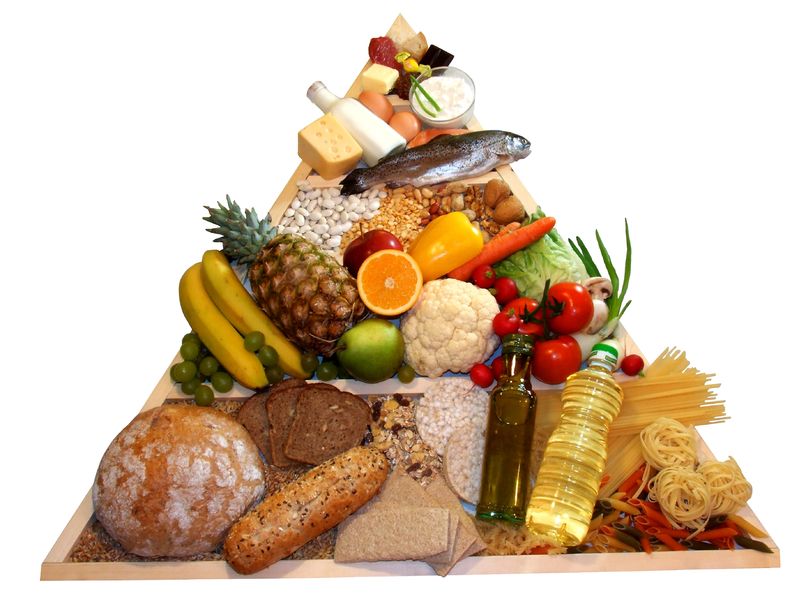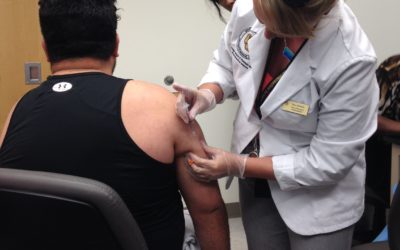The Food Pyramid/My Plate
Most of us have seen the iconic USDA Food Guide Pyramid at some point. It was first introduced in 1992, was remade in 2005 as My Pyramid, and in 2011 was changed to My Plate. All of these eating guides incorporate the different food groups and try to give us an understanding of how to eat a healthy diet. But have you ever wondered if they are correct? Who wrote them?
What research are they based on? Does profit or the food industry create a bias in these models? Why have they changed? Do you really need to eat 11 servings of grains in a day? Is there really a one size fits all diet? This article will help you understand the answers to all of these questions.
THE FOOD GUIDE PYRAMID
The original Food Pyramid was created in 1992 by the United States Department of Agriculture. It became the uncontested model for a “healthy diet” in schools, doctor’s offices, on food labels, and in the media. For more than 20 years, Americans tried to follow this high-carbohydrate, low-fat diet recommended by the Food Pyramid. The results are in, and sadly Americans are sicker and more over weight than ever before in our nation’s history. So what went wrong?
As the Food Pyramid held the power to greatly influence the multibillion dollar food industry, was the original Food Pyramid solely based on nutritional science, or was it was influenced by commercial interests? As more research has been done, it has become clear that a diet high in carbohydrates and low in fat is not optimal for disease prevention. (1)
A diet high in pasteurized dairy and carbohydrates causes inflammation and an overly acidic body pH, which is an underlying factor in almost every chronic disease. (2) It is also clear that many people are allergic to or have a difficult time digesting dairy and grains.
Click Here to Read our Blog About Alkaline vs. Acidic
MY PYRAMID
The 2005 My Pyramid model, which was like the original one turned on its side, was heavily criticized from the beginning as being too confusing and overly vague. The one good thing about this model was that it incorporated exercise as one of the “steps to a healthier you.” However, it still placed grains as the largest source of calories and did not incorporate our need for healthy fats.
With the massive increase in processed foods, this model did not help Americans navigate all of these choices. Many products advertised the number of “whole grains” it contained while being full of refined sugar, food additives, trans fat, genetically modified corn and soy, preservatives, artificial colors and flavorings, and other unhealthy ingredients. (3) A great example of this is breakfast cereals. The idea that Lucky Charms, Coco Puffs or Cinnamon Toast Crunch is a good and healthy breakfast choice—just because it contains whole grains—shows how far off track we’ve gone.
MY PLATE
In 2011, the new “My Plate” was introduced. This is a significant improvement from its predecessors as it is much easier to visualize what it actually means on your plate. Other improvements are that it is clean and simple, does not specify a number of servings (as this can vary greatly depending on an individual’s needs), and it simplifies the “meat, beans, eggs” category into just protein.
Criticisms are that it still does not help us navigate what kinds of foods should be in each category. Before the industrialization of our food supply, these categories were very simple. Now we are bombarded with thousands of choices and new “food products” on the shelves of the supermarket every week.
Is a Yoplait Go-Gurt (containing high fructose corn syrup, modified corn starch, preservatives, artificial flavors, Blue #1 and Red #40) a good choice for the “dairy” category? Does a fruit roll up (which proudly claims is made with real fruit but contains corn syrup, partially hydrogenated cottonseed oil [trans fat], dextrose, and artificial colorings) a good choice for the “fruit” category on the My Plate? (4)
CONCLUSION
So what should we eat!? The question, “what is a healthy diet?” seems to still remain once we take a deeper look at the shortcomings of these food models. Over the next few weeks, my blog will take you through each category of the My Plate (and the one that is missing… healthy fat!) and we will determine what a truly balanced diet for optimal health looks like.
My passion for good nutrition all started with questioning what exacly is in the food that I am eating, and wondering if the claims on the front of the food packages were as true as the label on the back of the package. Join me next week as we tackle the almighty base of the Food Pyramid… grains!
References:
1. http://www.hsph.harvard.edu/nutritionsource/pyramid-full-story
2. http://www.healthy-eating-politics.com/food-pyramid.html
3. http://www.nutritionjrnl.com/article/S0899-9007%2810%2900289-3/abstract
4. http://www.freshandnaturalfoods.com/health-trending/fresh-natural-food-pyramid












